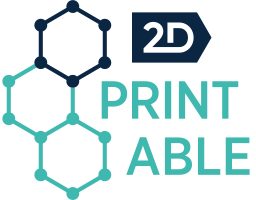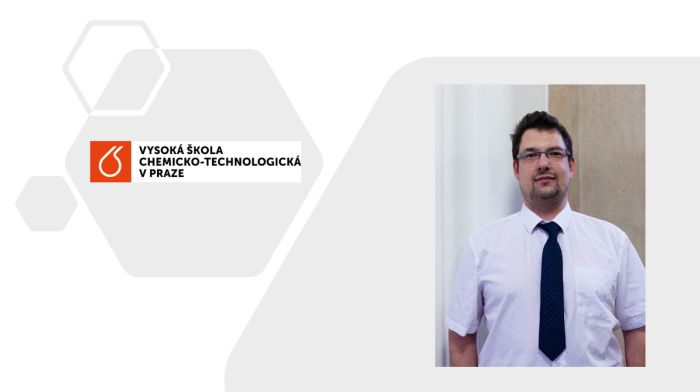My name is Zdenek Sofer, and I am one of the Principal Investigators (PI) in the 2D-PRINTABLE project. I obtained my Master’s degree and Ph.D. in inorganic chemistry, specializing in material synthesis and technology. My research focuses on the development of new materials, as well as synthesis and crystal growth methods. After completing my Ph.D, I worked part-time in Prague and at the Research Centre Jülich. I then undertook a postdoctoral position at the University of Duisburg-Essen. Shortly after this, I established my research group in the Department of Inorganic Chemistry at the University of Chemistry and Technology (UCT) in Prague. Initially, my research was closely related to classical AIIIBV technology, utilizing deposition systems that I had constructed during my Master’s and Ph.D. studies. Since 2010, my research focus has shifted towards 2D materials, starting with graphene and its chemistry, and later expanding to various other 2D materials. This has led to the development of one of the largest collections of layered 2D materials in the world.
Our group plays a crucial role in the 2D-PRINTABLE project, primarily focusing on the bulk synthesis of novel 2D materials, improving their quality, controlling doping, and upscaling known 2D materials. To achieve these objectives, we utilize large-scale growth of bulk crystals of 2D materials using various methods. Additionally, our group is involved in developing exfoliation and functionalization procedures for these materials, as well as conducting detailed characterization studies. For the inks we develop, we are also performing basic printing experiments.
What was your original motivation to become a researcher?
I have been interested in chemistry and the natural sciences since elementary school. During high school, I was torn between physics, chemistry, and geology. Ultimately, I chose chemistry; however, inorganic chemistry, synthesis, and especially crystal growth are closely related to geology and mineralogy, which have always been my hobbies. From my second year at university, I focused on materials technology and semiconductors, starting with classical III-V semiconductors during my studies.
What is your (main) research area today?
My main research area today focuses on the development of new 2D materials, including their crystal growth and exfoliation. By developing and optimizing new methods, we have been able to scale up production and discover new 2D materials with unique properties. Currently, we utilize more than twenty different crystal growth systems. Additionally, my group has started to intensify our focus on the applications of 2D materials in electronics, energy storage, and catalysis.
What is the main objective of your team in 2D-PRINTABLE?
My team is at the beginning of the pipeline, focusing on the production of bulk 2D materials, scaling up, and improving synthesis procedures, as well as developing entirely new methods. We also contribute to the development of exfoliation procedures, chemical modifications, and the analysis of materials.
What expertise and facilities does your team have to meet those objectives?
My lab is equipped with a wide range of synthesis equipment for various methods of bulk crystal growth, including gradient freezing, molten salt and flux growth, and particularly chemical vapor transport methods. We also manage the characterization of synthesized materials, utilizing microscopy techniques (SEM, AFM, TEM), chemical and structural analyses (XRD, XPS, Raman, FT-IR, EDS, DSC/TG), and exfoliation. Additionally, we have over 10 gloveboxes that allow for synthesis, exfoliation, characterization, and device fabrication within a controlled environment.
Which aspects of your research at 2D-PRINTABLE do you believe are the most innovative and what unique opportunities offer 2D-PRINTABLE to yourself and/or your organisation?
Our significant advantage lies in our extensive know-how in 2D materials synthesis, crystal growth, and exfoliation, as well as our large capacity for rapid testing of various synthesis methods. This enables us to conduct massive parallel testing of different compositions, doping processes, and crystal growth procedures, with the ability to perform nearly 100 crystal growth experiments per month. Additionally, we have the capability to carry out all procedures in a strictly inert atmosphere, preventing any sample changes or degradation.
How do you see the future use of the 2D-PRINTABLE results and the impact of 2D-PRINTABLE project in our daily lives?
The search for new exotic 2D materials has the potential to lead to groundbreaking discoveries that could revolutionize current electronics and many other fields, such as energy storage. Printing methods offer flexibility, rapid prototyping, and cost-effective production, opening up new possibilities and applications that are not feasible with existing solid-state technologies, which are often complex and expensive. These advancements are particularly promising for wearable electronics, the Internet of Things, sensors, and flexible energy storage devices.


